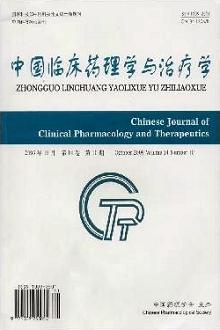Proliferation inhibition and apoptosis induction in human ovarian cancer SKOV3 cells by Cpd5
CHEN Li, HUO Guan-hua, LV Yao-feng, ZHANG Qin
2009, 14(10):
1121-1127.
 Asbtract
(
120 )
Asbtract
(
120 )
 PDF (548KB)
(
118
)
References |
Related Articles |
Metrics
PDF (548KB)
(
118
)
References |
Related Articles |
Metrics
AIM: To investigate the effect of Cpd5 on the proliferation inhibition and apoptosis induction in human ovarian cancer SKOV3 cells. METHODS: The growth inhibition of Cpd5 in SKOV3 cells was detected by MTT assay.AnnexinV PI staining was employed for quantifying apoptotic cells by fluorescence microscopy and flow cytometry.The apoptotic morphology was observed by Hoechst-33258 staining. RESULTS: After Cpd5 treatment at the concentrations of 5, 10, 20, 30, 40, 50 and 60 μmol/Lfor 48 h, the ratios of the cells growth inhibition were 2.77 %, 5.19 %, 10.61 %, 41.15 %, 71.37 %, 82.90 % and 89.81 %, respectively.The proliferation was inhibited after Cpd5 treatment at different times of 12, 24, 48 and 72 h, the cells were inhibited by Cpd5, in a dose-time-dependent manner.The apoptotic cells accounted for 9.25 %, 20.07 % and 56.16 %, after Cpd5 treatment by 30 μmol/Lfor 12, 24 and 48 h, respectively.The ratio of apoptotic cells in 50 μmol/Lgroup was significantly higher than that in 30 μmol/Lgroup.The morphological changes were emerged after Cpd5 treatment at the concent rations of 40, 50 and 60 μmol/Lfor 12 h.Compared with the control group, the ratios of the apoptotic cells were increased significantly in the groups induced by Cpd5 at different concentrations.The apoptotic cells were increased in the groups of Cpd5 treatment at 20 μmol/Lfor 24 h and 48 h by Hoechst-33258 staining.Furthermore, the ratios of apoptotic cells were increased significantly in the groups of Cpd5 treatment at 30, 40, 50 and 60 μmol/LCpd5 at different time-points. CONCLUSION: Cpd5 can induce proliferation inhibition and apoptosis in SKOV3 cells, in a dose-time-dependent manner.Our data reveal that Cpd5 is a novel anti-ovarian cancer compound.


